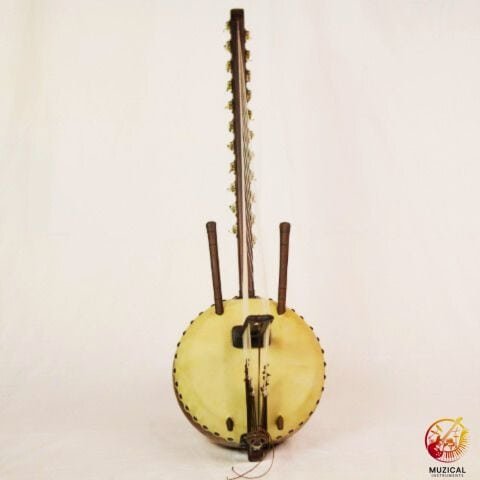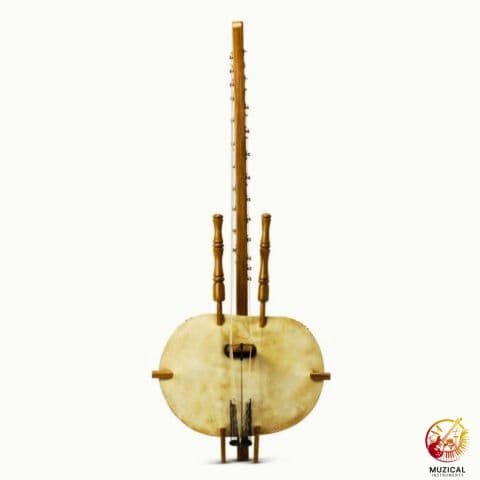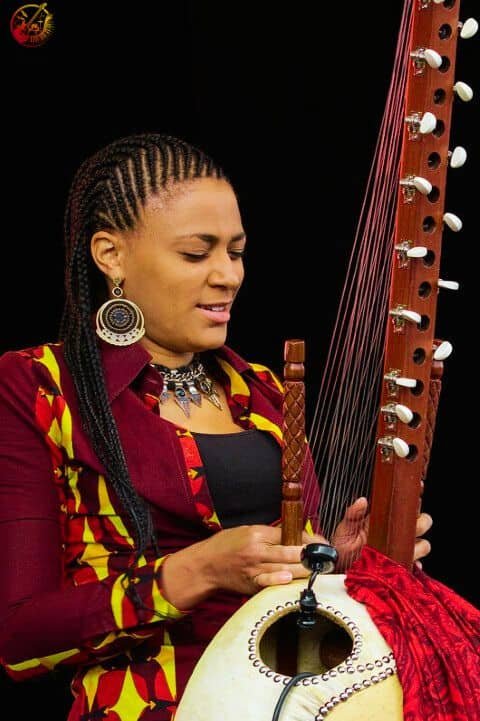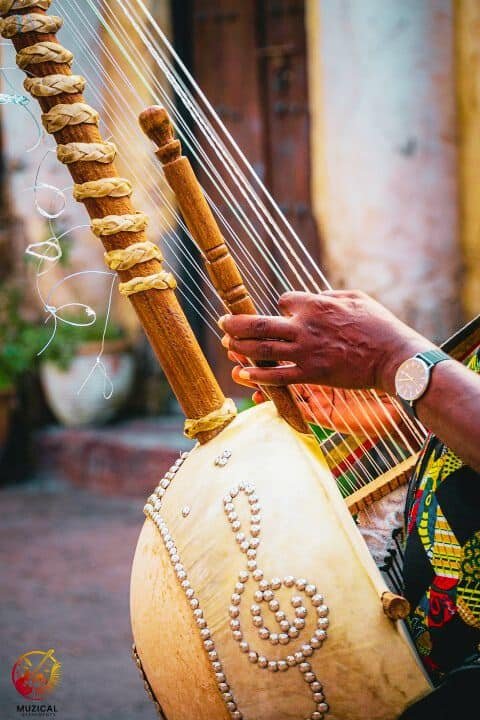5 Amazing Facts About the Kora You Probably Didn’t Know
Learning the essential facts about the kora is like discovering a 700 year old storyteller. This West African instrument is so much more than just strings and wood; its main job for centuries has been to keep the histories of families alive.
First appearing during the time of the great Mali Empire, the kora became the very heart of a living culture.
You’ve probably heard its beautiful music in a movie or on the radio. But the real story is what the kora is truly known for: telling epic tales, preserving history, and the amazing skill it takes to play it.
So, let’s dive deeper than just the sound. We’ll look at its unique shape, the secret of its strings, its special role in society, the mind boggling technique of the players, and how its style changes from one region to the next.
Fact 1: Why is the Kora a Unique Hybrid Instrument?


When you first see a kora, you might struggle to classify it. It has a long neck like a lute, but you don’t press the strings against it. It has a whole field of strings, sort of like a harp, but they are arranged in two parallel rows.
So, what exactly is it? One of the most fundamental facts about the kora is that it defies simple Western categorization.
Ethnomusicologists often place it in a unique class called a “bridge harp” or “harp lute.” Think of it as the platypus of the instrument world, it has features from different families, but it ultimately belongs to its own distinct category.
This unique design isn’t just for show; it’s a piece of brilliant engineering that directly creates its signature sound.
The body is a large calabash gourd, cut in half and covered with cowhide, which acts as a soundboard. This combination gives the kora its warm, resonant, and slightly percussive tone.
A long hardwood neck passes through the gourd, and a tall, notched wooden bridge stands upright on the hide. This is where the magic happens. Unlike a harp, where strings connect directly to the soundboard, or a lute, where they run along a fretted neck, the kora’s 21 strings pass over this bridge.
This arrangement forces the player to approach the instrument in a completely unique way, holding it towards them and plucking the two rows of strings with only their thumbs and index fingers.
| Feature | Kora | Harp | Lute/Guitar |
|---|---|---|---|
| Strings | 21 strings in two parallel rows | 40+ strings in a single row | 4-12 strings on one plane |
| Resonator | Large calabash gourd with cowhide | Wooden soundbox | Wooden body |
| Neck | Long neck serves as an anchor, no frets | No neck, strings attach to frame | Neck with a fretboard |
| Playing Method | Plucked with thumbs and index fingers | Plucked with all fingers | Plucked or strummed; fretted with other hand |
| Classification | Bridge Harp / Harp-Lute | Frame Harp | Lute |
Fact 2: What Were Kora Strings Originally Made Of?
The parts used to build a kora have always come from the land. While the gourd body and wood neck are neat, the story of its strings is one of the most practical facts about the kora. It tells you a lot about how the instrument has changed to survive in the modern world.
Originally, the 21 strings on a kora were made from thin, twisted strips of antelope hide. Making them was a real skill. A builder had to carefully pick the right hide and work it into strings of different sizes to make all the right notes. This gave the kora a very warm and earthy sound that old-time players, the griots, loved.

But there was a big problem. Those hide strings were a nightmare to keep in tune. Any change in the weather, like heat or humidity, would mess up the sound. They also snapped easily and were hard to replace, which you can imagine would be frustrating for a traveling musician.
So, things had to change. Players switched to something that worked much better: nylon fishing line. Today, almost every kora player uses simple nylon strings. They are way more durable, they stay in tune, and they give the kora a bright, clear sound.
While some people might miss that old, raw sound, nylon strings let the kora be played on stages all over the world. This small switch made a huge difference.
Fact 3: Why is the Kora a “Griot” Instrument?
To really understand the kora, you first need to know about the griot (or jeli). In West Africa, a griot isn’t just a musician. Think of them as the town’s storyteller, historian, and peacemaker, all rolled into one.
Before writing was common, griots were living libraries, memorizing every important story, family tree, and major event.
So, how did they share all this? With the kora. The instrument wasn’t just background music; it was part of the story itself, setting the mood and helping people feel the history.
This link between the storyteller and the instrument is one of the most important facts about the kora. The role of griot was a huge responsibility, usually passed down in families from father to son.
But today, things are changing. Artists like Sona Jobarteh, the first famous female player from a major griot family, are breaking old rules.
A griot’s job is also more than entertainment. They are often asked to settle arguments because they know everyone’s history. For them, the kora isn’t just for music, it’s a tool for holding an entire culture together.
Fact 4: What Makes the Kora’s Playing Style So Complex?


Here’s one of the most amazing facts about the kora: a single musician can sound like a whole band. This is because they play several different parts all at once. It takes some serious coordination.
A player rests the big gourd in their lap, holding onto two wooden posts. Their hands don’t move up and down a neck like on a guitar. Instead, they get their thumbs and pointer fingers ready on both sides of the strings.
This is where the magic happens. The two thumbs have one job: to play the bass line and the main rhythm. This steady, looping groove is called the kumbengo. It’s the song’s backbone.
While the thumbs hold down that beat, the two pointer fingers are free to do something else entirely. They dance around, playing the main tune and all the fast, fancy notes that fly on top. This lively part is called the birimintingo.
So, you have the thumbs laying down a solid groove while the fingers play a beautiful melody over it. It’s this constant conversation between the rhythm and the tune that makes kora music sound so rich and alive.
| Part | Material | Function |
|---|---|---|
| Calabash Gourd | A large, dried gourd | Acts as the main resonator, creating a warm sound. |
| Cowhide | Tanned cow skin | Stretched over the gourd, it serves as the soundboard. |
| Neck | Rosewood or other hardwood | An anchor for the strings that passes through the gourd. |
| Strings | Nylon fishing line (modern) | 21 strings arranged in two parallel rows (11 left, 10 right). |
| Bridge | Notched hardwood | Stands vertically on the cowhide, elevating the strings. |
Fact 5: An Essential Fact About the Kora: Its Varied Regional Tunings
Here’s a final cool fact about the kora: there is no single “right” way to tune a kora. Unlike a piano, where every key is tuned the same all over the world, kora players use many different tunings. The tuning, called sila, changes a lot depending on where the player is from and the types of songs they play.
Each tuning creates its own special feeling. For example, a player in Gambia might use a tuning called Tomora, which can sound sweet and a little bit sad.
But a player in Mali might use Silaba for their kora, a tuning that sounds bright and happy, perfect for exciting stories about heroes. Other tunings can sound powerful and driving, or dreamy and open.
So, why do they have so many different tunings? Because each one sets a different mood. A griot, or storyteller, will choose a tuning that matches the feeling of the story they are about to tell.
It’s like a painter choosing specific colors for a sad scene versus a happy one. This shows that the kora isn’t just one instrument; it’s a whole family of musical moods.
| Tuning Name | Common Region | Musical Character / “Feel” |
|---|---|---|
| Silaba | Mali, Guinea | Bright, sweet, major-sounding. Often used for praise songs. |
| Tomora | Gambia, Senegal | Also known as Tomora Ba. Has a minor, slightly bluesy feel. |
| Hardino | Gambia (Fula tradition) | Powerful and energetic, often with a raised seventh note. |
| Sauta | Mali, Gambia | Bright, with a raised fourth note, giving it a distinctive, open sound. |
A Voice for the Past and the Future
As you can see from these five facts about the kora, the instrument is way more than just 21 strings. It’s a clever mix of a harp and a lute, a storyteller whose strings changed from animal hide to nylon, and a voice for history.
It’s played with amazing skill and tuned in different ways to create the perfect mood for all the old stories.
The kora is proof that a simple instrument can be the best way to keep a people’s history safe. The next time you hear its tumbling notes, you’ll understand the deep story behind the beautiful sound.
If you want to hear this magic for yourself, a great album to start with is The Mandé Variations by Toumani Diabaté. Or even better, try to see someone play it live.
While the Kora shines in West Africa, other regions have their own treasures like the Algerian Kwitra string instrument with its rich cultural roots.
FAQ: Facts About the Kora
Q1. What is a kora made of?
A traditional kora is made from natural materials. The body is a large, dried calabash gourd covered with cowhide, which acts as the soundboard. A long wooden neck runs through the gourd, and it has 21 strings. A long time ago, the strings were made from animal hide, but today almost all players use nylon fishing line.
Q2. Is the kora hard to learn?
Yes, the kora is considered a challenging instrument to master. The difficulty comes from its unique playing style. The player must use their thumbs to play a steady rhythm and bass line, while at the same time using their two pointer fingers to play a completely separate melody. It requires a lot of coordination, similar to a pianist playing different parts with each hand.
Q3. Who is the most famous kora player?
While “best” is always a matter of opinion, Toumani Diabaté from Mali is widely regarded as the “king of kora.” His incredible skill and numerous collaborations helped introduce the instrument to a global audience. Today, other amazing artists like Sona Jobarteh, the first professional female virtuoso from a major griot family, are also carrying the tradition forward.
Q4. Why are there different kora tunings?
Unlike a piano, which is tuned the same way everywhere, the kora has many different tunings. Each tuning creates a very different feeling or mood, some sound bright and happy, while others sound more thoughtful or sad. A storyteller, or griot, chooses a specific tuning to match the emotion of the story or song they are about to perform.
Q5. What is a griot?
A griot or jeli, is a respected figure in West African culture. They are much more than just musicians; they are the community’s traditional storytellers, historians, and keepers of family histories. For centuries, they have used the kora as their main tool to pass down these important stories and cultural knowledge from one generation to the next.
